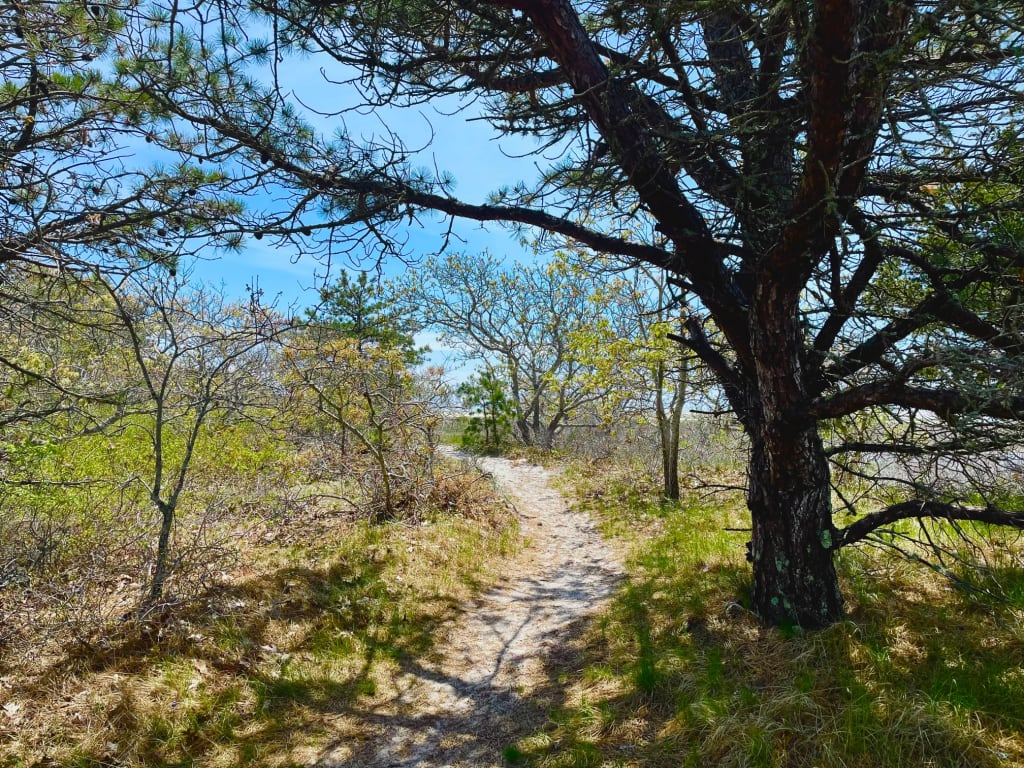On the Sentience of Trees
unhinged thoughts about the trees

I try to not think too much about the trees.
I try to not think too much or too long because the possible implications of their possible sentience is too abstract and possible horrifying.
I honestly don’t know if I’m exaggerating or not. I don’t know if I believe that they are sentient - maybe because I don’t want to. We have learned that plants respond to stimuli, have some reaction to music - even showing supposed preferences (they tend to prefer classical to metal), there are tentative signs towards memory, and there are trees which will send nutrients to their seedlings and saplings until they are past the tender stage. Trees take of their young. It’s an odd thought, to think that plants can take care of their young and that they know which ones are theirs.
The oldest clonal tree is just inching towards 10,000 years. The oldest non-clonal tree is just shy of 5,000. I learned what clonal and non-clonal are: regenerated vs continuous uninterrupted existence. I don’t know if I want to consider if a tree can live indefinitely as a clonal tree. The trees names are Old Tjikko and Methuselah respectively. Old Tjikko’s trunk is only a few hundred years old but the root system is thousands, residing in Sweden. Methuselah has been growing for thousands of years in California. There could be older nonclonal trees. Literally ancient living things. I’m unsure if I wished they could communicate with us or not. If there is a sentience, what have they witnessed and is there capability for judgement?
We have passed judgement on the trees, on all plants. We do not see something akin to a nervous system so we assumed there isn’t thought within them. But maybe we need to stop comparing all systems to our own because it could be holding back our understanding of how things function and their realities. I hold this be a defense mechanism. It’s difficult to comprehend outside of our reality and how people work on mechanical or emotional levels, let alone understand a songbird or a trailing vine. It’s very likely we can’t without melting down. Yet the bird is easier to understand because their reality is closer to ours. This could be how we feel empathy and sympathy towards a fox but show near disregard towards a birch.
Mother trees are old growth trees, partnered with mycorrhizal fungi to communicate with their saplings and with other trees. They recognize their young, helping them by supplying addtional carbon and restricting their own roots’ reach so that the growing trees will have space to establish their own. This sharing of resources and regard extends to their own relatives, whatever that system may be. They benefit from their neighbors, from trees unrelated to them and even a different species. The different species of trees can have mutually beneficial relationships. They build and maintain community better than most humans do and create balance in their territories. I don’t fully understand how we know this, but there is evidence and record.
A lot of this isn’t new knowledge and cannot be new. There are people who have either suspected this to be true or came to the correct conclusions without modern Euro/-colonial science. But even modern science did know yet disregarded, relegating it the “Maybe Later” pile until modern times. As the world changed, as it was taken over and colonized, we set ourselves back and held ourselves back. There is so much unlearning - of processes, of analysis, how we view the world through which lenses. Other scientific observations and processes were waved aside or actively destroyed because of hubris, at best, or cruelty, at worst. A humbling is slowly taking place, bringing with it long overdue yet still imperfect respect - towards the trees and towards the peoples who had long known. There is migration from the conquer mindset. The professional fields are starting to embrace plasticity while rejecting rigidity; thought it is met with resistance and hostility. The questions are daunting and the implications disquieting.
Trees show archival of generational knowledge - we can see for ourselves it being etched in their rings, sharing of this learning, and show consideration. These living structures which live out their lives in one spot are capable of interpersonal relationships. They do not look like ours but that is what they effectively are. Care is shown. Assistance is provided. There is give and take. Recognition exists. And we harvest these things. We pull apart the environment they live in, taking down not only trees but the flora and fauna surrounding.
The trees have not changed fundamentally for eons. Yet we could be pushing them over the edge. What if these trees could move as a snake, amoeba, or barnacle does? Either by moving its whole being as a sloth does or reaching out while staying in place like a barnacle? Could we handle enormous, ancient trees trundling across soil and sand or swiping at us as we walked by? Could they evolve to do such a thing?
This is why I don’t try to think about the trees often and even them I don’t give much time. It’s unnerving to consider what it means if the full scope is revealed. Our relationship to the trees will and should change. It will also beg the question of what this means of our relationship to cultivars and the weeds. It does feel unhinged to give attention to these thoughts and to feel a struggle to comprehend what lies beyond the information. Conclusion follows information and I can’t tell if I want to know.
—
Resources
‘Mother Trees’ Are Intelligent: They Learn and Remember - And ecologist Suzanne Simard says they need our help to survive by By Richard Schiffman on May 4, 2021; accessed October 25, 2022.
Facts or Fairy Tales? Peter Wohlleben and the Hidden Life of Trees by Sharon Elizabeth Kingsland, August 2018; accessed October 25, 2022.
Intelligent Trees (2016) documentary, directed by Julia Dordel.
The Hidden Life of Trees: What They Feel, How They Communicate―Discoveries from A Secret World by Peter Wohlleben (2015), translated by Jane (2016) - English Edition.
Mycorrhizal Networks Facilitate Tree Communication, Learning, and Memory by Suzanne W. Simard, April 2018; accessed October 25, 2022.
Plants emit informative airborne sounds when stressed by Khait et al., December 2019; accessed October 30, 2022.
About the Creator
Chaia Levi
like if Nabokov had a brain injury
artist, writer, photographer
instagram, tiktok, tumblr: @chaialevi






Comments
There are no comments for this story
Be the first to respond and start the conversation.